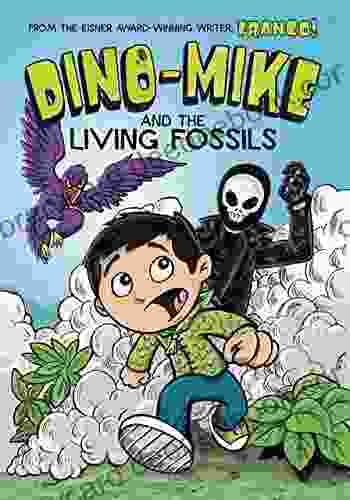44 Ways to Understand Asperger's Syndrome, ADHD, ADD, and Autism

Understanding Asperger's Syndrome, ADHD, ADD, and autism is crucial for fostering inclusivity, providing support, and empowering individuals with these conditions to thrive. This comprehensive guide explores 44 insights to enhance your understanding and provide valuable strategies:
4.3 out of 5
| Language | : | English |
| File size | : | 1865 KB |
| Text-to-Speech | : | Enabled |
| Screen Reader | : | Supported |
| Enhanced typesetting | : | Enabled |
| Word Wise | : | Enabled |
| Print length | : | 56 pages |
| Lending | : | Enabled |
| X-Ray for textbooks | : | Enabled |
Recognizing Signs and Symptoms
- Social difficulties: Challenges with social interactions, such as difficulty understanding social cues, initiating conversations, or maintaining eye contact.
- Repetitive behaviors: Engage in repetitive movements or routines, such as hand flapping, rocking, or lining up objects.
- Sensory sensitivities: Over- or under-sensitivity to sensory stimuli, such as loud noises, bright lights, or certain textures.
- Communication challenges: Difficulty understanding or using language, including echolalia (repeating words or phrases),literal interpretation, or delayed speech.
- Attention difficulties: Persistent struggles with paying attention, staying focused, or following instructions.
- Hyperactivity and impulsivity: Excessive movement, difficulty sitting still, or impulsive actions without considering consequences.
Providing Support and Accommodations
- Create a structured environment: Establish clear routines, schedules, and expectations to reduce anxiety and promote predictability.
- Provide visual aids: Use pictures, charts, or written instructions to support understanding.
- Respect sensory needs: Offer noise-canceling headphones, sunglasses, or fidget toys to accommodate sensory sensitivities.
- Allow for breaks: Provide regular breaks to prevent sensory overload or emotional exhaustion.
- Use social stories: Create simple narratives to explain social situations and teach appropriate behaviors.
- Encourage communication: Use clear language, avoid sarcasm, and allow ample time for responses.
Understanding Autism and Asperger's Syndrome
- Autism spectrum disorder (ASD): A complex developmental condition that affects social interaction, communication, and behavior, with a range of symptoms and severity.
- Asperger's Syndrome: A former diagnosis within the autism spectrum that is now considered part of ASD, characterized by social difficulties, repetitive behaviors, and narrow interests.
- Triad of impairments: ASD is diagnosed based on three core impairments: social interaction, communication, and restricted or repetitive behaviors.
- Sensory processing disorder (SPD): A condition that affects how the brain receives and processes sensory information, causing sensitivities or difficulties processing certain stimuli.
- Executive functioning challenges: Difficulties with planning, organizing, working memory, and impulse control.
- Theory of Mind: The ability to understand others' thoughts, beliefs, and intentions, which may be impaired in ASD.
Understanding ADHD and ADD
- Attention-deficit hyperactivity disorder (ADHD): A neurodevelopmental disorder characterized by difficulty paying attention, excessive activity, and impulsive behavior.
- Attention-deficit disorder (ADD): A subtype of ADHD that primarily affects attention and focus, with less pronounced symptoms of hyperactivity and impulsivity.
- Executive functioning deficits: ADHD individuals often struggle with time management, organization, working memory, and emotional regulation.
- Hyperfocus: The ability to concentrate intensely on certain activities, sometimes to the exclusion of others.
- Comorbidity: ADHD is often comorbid with other conditions, such as anxiety, depression, and learning disabilities.
Empathy and Communication
- Cultivate empathy: Strive to understand the perspectives and experiences of individuals with ASD or ADHD.
- Use clear and direct language: Avoid using abstract or ambiguous terms, and provide context for your statements.
- Respect differences in communication style: Understand that individuals with ASD or ADHD may communicate differently, so adapt your approach accordingly.
- Allow for processing time: Give individuals ample time to process information and respond, as they may require additional cognitive effort.
- Use non-verbal cues: Pay attention to body language, facial expressions, and gestures to enhance understanding.
- Consider using visual aids: Support comprehension by using pictures, charts, or written materials to illustrate ideas.
Social Skills and Socialization
- Teach social skills: Explicitly teach social cues, conversation skills, and appropriate behaviors in various settings.
- Foster social interactions: Create opportunities for individuals with ASD or ADHD to engage in social activities and practice their skills.
- Provide peer support: Connect individuals with peers who share similar interests or experiences to promote social development.
- Encourage community involvement: Support participation in clubs, groups, or volunteer organizations to broaden social experiences.
- Address social anxiety: Understand that individuals with ASD or ADHD may experience social anxiety, and provide strategies to manage it.
Sensory Processing and Emotional Regulation
- Identify sensory triggers: Help individuals identify specific sensory stimuli that trigger discomfort or distress.
- Create sensory-friendly environments: Provide calming and supportive environments with reduced noise, visual distractions, or overwhelming scents.
- Teach coping mechanisms: Equip individuals with strategies to manage sensory overload, such as deep breathing exercises, weighted blankets, or noise-canceling headphones.
- Address emotional outbursts: Understand that individuals with ASD or ADHD may experience frequent emotional outbursts, and develop strategies to respond calmly and effectively.
- Encourage mindfulness and relaxation techniques: Introduce mindfulness and relaxation techniques, such as yoga, meditation, or deep breathing, to promote emotional regulation.
- Provide emotional support: Offer emotional support and validation to individuals who may struggle with expressing or understanding their emotions.
Interventions and Therapies
- Early intervention: Early identification and intervention are crucial for maximizing developmental outcomes and minimizing challenges.
- Applied behavior analysis (ABA): A therapy based on the principles of operant conditioning, focusing on increasing desired behaviors and reducing problem behaviors.
- Speech and language therapy: Targeted therapy to improve communication skills, including speech production, language comprehension, and social language.
- Occupational therapy: Helps individuals develop skills for daily living, sensory processing, and fine motor coordination.
- Medication: Certain medications may be prescribed to manage symptoms of ADHD, such as stimulants or non-stimulants.
- Social skills training: Group or individual therapy designed to teach social skills, such as initiating conversations, understanding social cues, and managing social interactions.
Resources and Support
- Autism Society of America: https://www.autism-society.org/
- National Institute of Mental Health: https://www.nimh.nih.gov/
- Centers for Disease Control and Prevention: https://www.cdc.gov/ncbddd/autism/index.html
- Understood: https://www.understood.org/
- CHADD (Children and Adults with Attention-Deficit/Hyperactivity Disorder): https
4.3 out of 5
| Language | : | English |
| File size | : | 1865 KB |
| Text-to-Speech | : | Enabled |
| Screen Reader | : | Supported |
| Enhanced typesetting | : | Enabled |
| Word Wise | : | Enabled |
| Print length | : | 56 pages |
| Lending | : | Enabled |
| X-Ray for textbooks | : | Enabled |
Do you want to contribute by writing guest posts on this blog?
Please contact us and send us a resume of previous articles that you have written.
 Book
Book Novel
Novel Page
Page Chapter
Chapter Library
Library E-book
E-book Magazine
Magazine Newspaper
Newspaper Sentence
Sentence Bookmark
Bookmark Shelf
Shelf Glossary
Glossary Bibliography
Bibliography Preface
Preface Synopsis
Synopsis Annotation
Annotation Codex
Codex Tome
Tome Narrative
Narrative Biography
Biography Autobiography
Autobiography Memoir
Memoir Encyclopedia
Encyclopedia Dictionary
Dictionary Thesaurus
Thesaurus Narrator
Narrator Character
Character Librarian
Librarian Catalog
Catalog Card Catalog
Card Catalog Stacks
Stacks Archives
Archives Periodicals
Periodicals Study
Study Research
Research Scholarly
Scholarly Lending
Lending Reading Room
Reading Room Rare Books
Rare Books Storytelling
Storytelling Stephen Allen
Stephen Allen Roni Sarig
Roni Sarig Michael Fabey
Michael Fabey Jon Liebman
Jon Liebman Rand Bishop
Rand Bishop S J Knight
S J Knight Lisa Whitsett
Lisa Whitsett William Kinderman
William Kinderman Peter Bently
Peter Bently Elyssa Friedland
Elyssa Friedland Robert Stanek
Robert Stanek Michael Chabon
Michael Chabon Robert Wrigley
Robert Wrigley John Helmer
John Helmer Bill Connington
Bill Connington Tim Mccanna
Tim Mccanna Cherish Amore
Cherish Amore Jill M Sullivan
Jill M Sullivan Joni Mitchell
Joni Mitchell Marci Briggs
Marci Briggs
Light bulbAdvertise smarter! Our strategic ad space ensures maximum exposure. Reserve your spot today!

 John ParkerQuick Wheel Pick: A Comprehensive Guide to Finding the Perfect Tires Without...
John ParkerQuick Wheel Pick: A Comprehensive Guide to Finding the Perfect Tires Without... Dominic SimmonsFollow ·16.5k
Dominic SimmonsFollow ·16.5k Devon MitchellFollow ·18.7k
Devon MitchellFollow ·18.7k Ernest HemingwayFollow ·19.9k
Ernest HemingwayFollow ·19.9k Andres CarterFollow ·9.3k
Andres CarterFollow ·9.3k Neil GaimanFollow ·3.1k
Neil GaimanFollow ·3.1k Dakota PowellFollow ·18.9k
Dakota PowellFollow ·18.9k Victor TurnerFollow ·5.1k
Victor TurnerFollow ·5.1k Terence NelsonFollow ·6.2k
Terence NelsonFollow ·6.2k

 Braden Ward
Braden WardPopular Classical Carols of All Time for Beginner Trumpet...
Christmas is a time...

 Galen Powell
Galen PowellDark Secrets Unraveled: Exploring the Enigmatic Dark 15
In the depths of the...

 Michael Chabon
Michael ChabonDino Mike and the Living Fossils: Unlocking the Secrets...
In a world teeming...

 Henry Green
Henry GreenThe Enchanting World of Jeevan: A Journey Through the...
In the realm of children's...

 Kirk Hayes
Kirk HayesWho Did It First: A Comprehensive History of Human...
Innovation is the...
4.3 out of 5
| Language | : | English |
| File size | : | 1865 KB |
| Text-to-Speech | : | Enabled |
| Screen Reader | : | Supported |
| Enhanced typesetting | : | Enabled |
| Word Wise | : | Enabled |
| Print length | : | 56 pages |
| Lending | : | Enabled |
| X-Ray for textbooks | : | Enabled |












